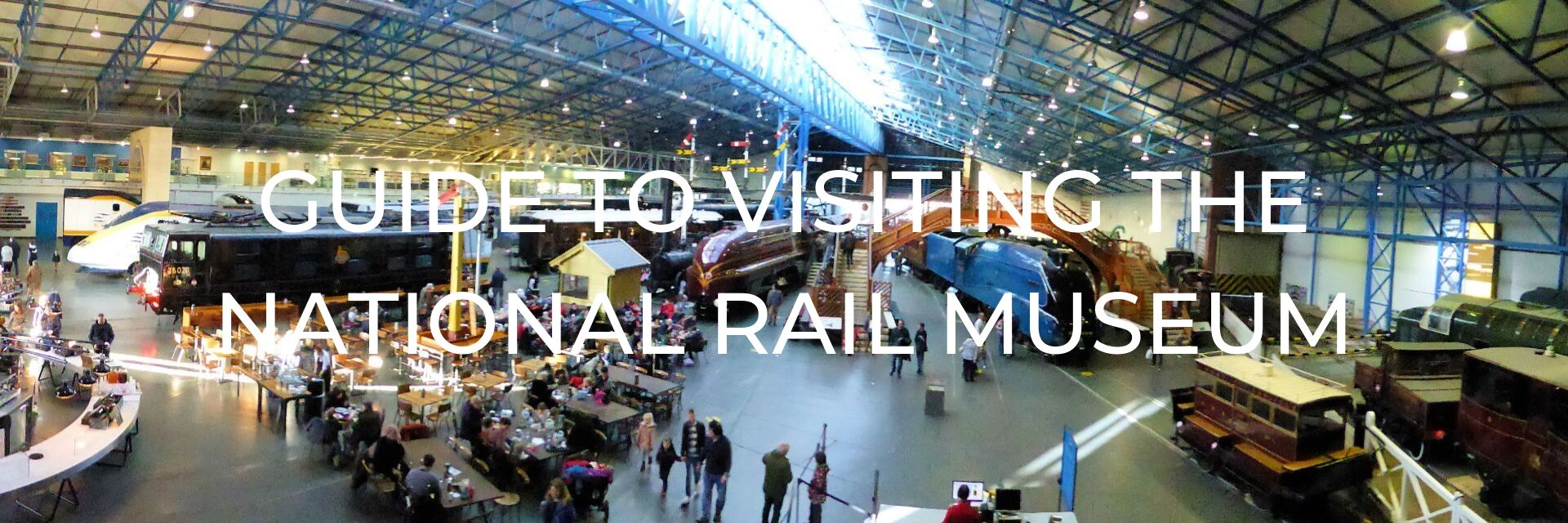
The National Rail Museum is the UK’s national collection of significant railway vehicles and tells the story of rail transport in Britain. Starting with the invention of steam locomotives and the opening of the first freight and passenger railways it progresses right through to the modern electric trains of recent years. Stories about the importance of railways during times of war are told alongside exhibitions of the opulence of Royal trains and some of the most famous engines from the UK and around the world.
Want to save this for later? Click the Pinterest button on the left for a pinnable image!
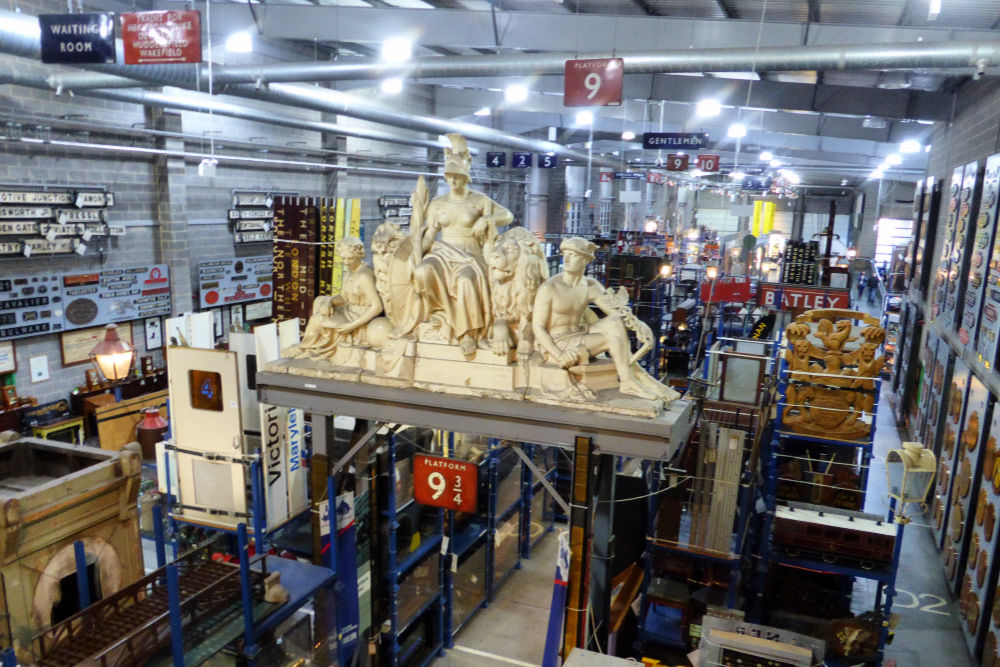
This post may contain affiliate links. Please read our full disclosure policy here.
The National Rail Museum came about from the merger of the Science Museum collection, which was begun by the Patent Office, and contributions by the North Eastern Railway. Whether engines survived was often little more than luck, with some engines being stored for long enough that they became important and others consigned to the scrap heap and broken up for their scrap metal.
The early collection was dominated by the contributions from the North Eastern Railway, which by then had become the London and North East Railway or LNER. Other companies from the ‘Big Four’ UK railways initially weren’t interested in the endeavour but did provide at least one example of an engine from their fleets to the museum. It wasn’t until the railways were nationalised and became British Rail in 1948 that the opportunity arose to consolidate the museum approach and allow it truly become a national railway museum.
Nationalisation allowed for specific engines to be targetted for preservation to ensure they would not be lost for the nation and ended any issues arising from differences between individual railway companies. Even then, the Beeching Report, that closed so many lines in the UK, also called for the end of British Railways running museums. These events led to the opening of the museum in its current form as the National Railway Museum in 1975.
HIGHLIGHTS OF THE NATIONAL RAIL MUSEUM
For anyone interested in trains, the National Railway Museum has plenty to offer. From historic locomotives to record-breaking engines and opulent royal trains to ambulance trains used to bring injured soldiers home from war. From early examples of locomotives to modern high-speed trains and examples of trains from around the world to thousands of interesting artefacts from across the rail age.
There isn’t a guided route through the museum, so be sure to check the map to be certain you don’t miss anything you really want to see.
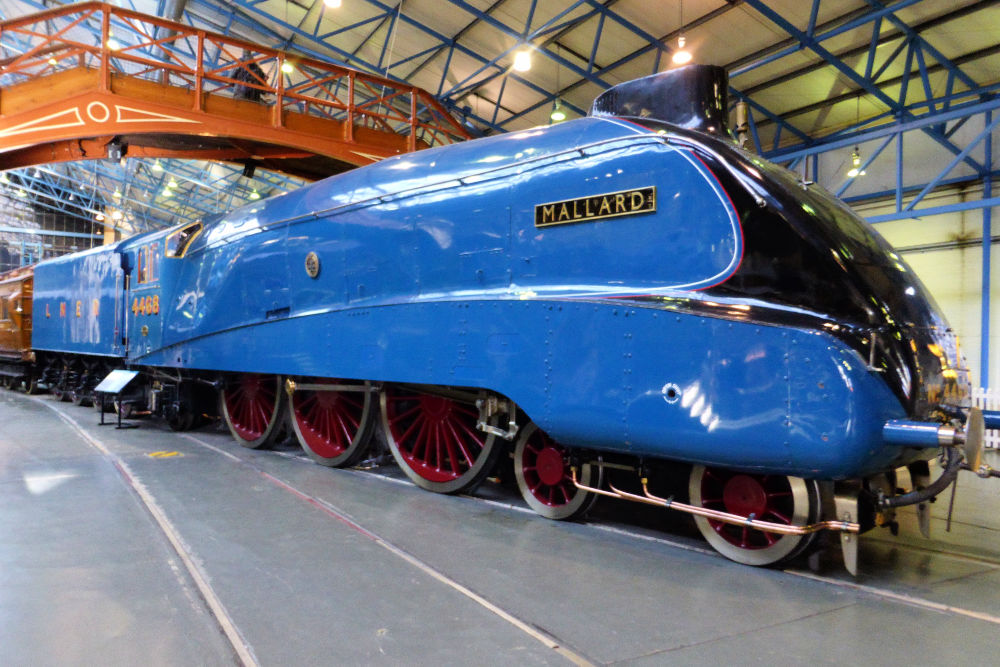
THE MALLARD
The Mallard is the fastest steam locomotive in the world, reaching a speed of 126 mph (203 km/h). It achieved this record-breaking speed on the 3rd July 1938 south of Grantham on the East Coast Mainline while testing a new braking system.
Built just four months before the record and the fact the speed was reached on a slight downhill stretch of the track were beneficial factors in the record being achieved. Though having to slow to go through the junction at Essendine led the driver and inspector to speculate the engine could have hit 130 mph (209 km/h). Though the record was documented using a Dynamoter car, technological limitations mean the record would not pass modern standards for being an official record.
With the demise of steam power across the world, it is a record that will almost certainly never be beaten. The Mallard is displayed in LNER’s garter blue colour scheme and has pride of place in the centre of the great hall.
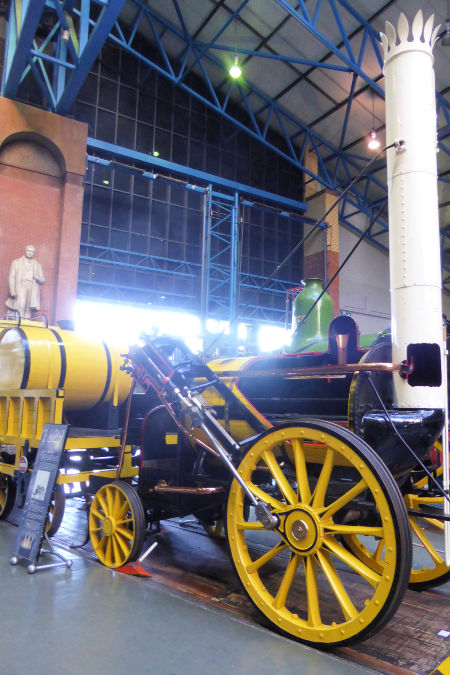
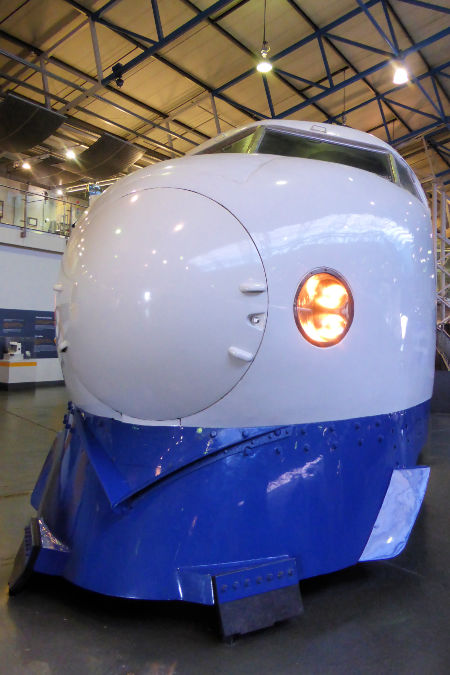
OTHER HISTORIC ENGINES
Aside from the Mallard, there are historic steam and more modern locomotives aplenty to view:
- A replica of George Stephenson’s Rocket. The winner of the Rainhill trials which were held to find an engine for the new Liverpool and Manchester Railway in 1829.
- An original Eurostar engine, designed to move passengers between London and Paris or Brussels at speeds of up to 186 mph (300 km/h)
- The only Shinkansen (Bullet Train) on display outside of Japan. One of the earliest truly high-speed trains designed to connect Japan’s cities as quickly as possible.
- The Flying Scotsmen’s home is at the National Railway Museum and maybe on display depending on its schedule, you can learn more about this famous locomotive in the North Shed.
- A classic liveried Inter-City 125 which transformed rail travel with much higher speeds and comfort than before and are the fastest diesel locomotives in the world.
You can also learn about how steam engines work by peering inside a specially cutaway engine which allows you to see deep inside the inner workings of these machines.
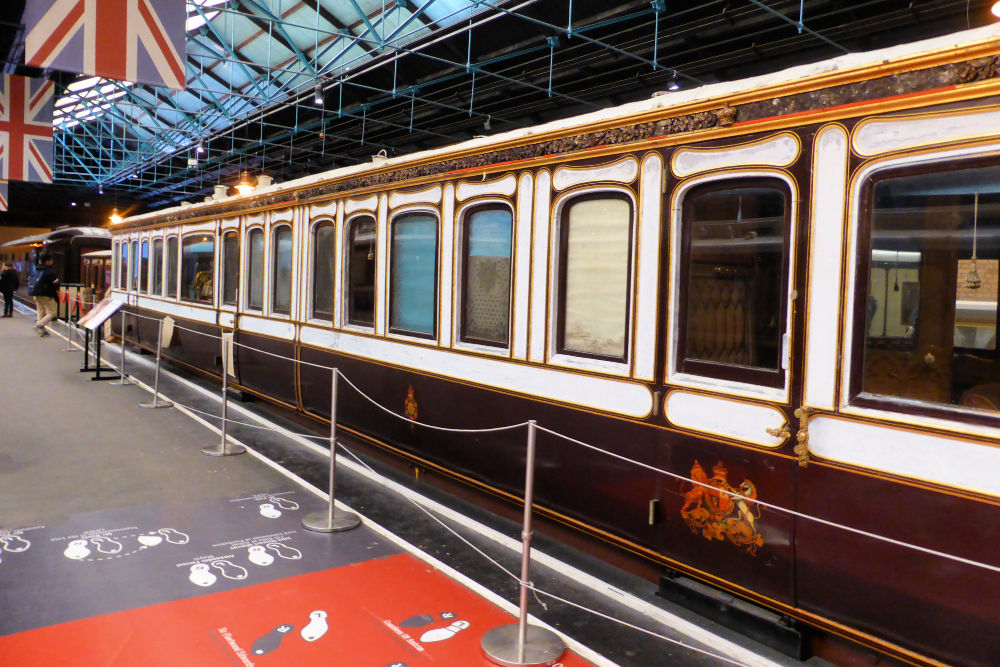
STATION HALL
Station Hall was built in 1870 and was in active use right up until the 1960s, it now replicates a railway station from the golden age of steam with authentic engines, carriages and decor.
A primary attraction in Station Hall is the display of Royal train carriages, from Queen Victoria to Queen Elizabeth II, these opulent carriages were the very best that could provide for when the monarch needed to travel long distances. The second world war meant a reduction in luxury due to times of hardship and the requirement to make the trains better protected in case of attack.
Alongside the royal display are a myriad of other engines and rolling stock to explore. From milk wagons that brought milk to the cities on the early morning milk trains to post office sorting cars which allowed postal workers to sort the mail as it hurtled across the country.
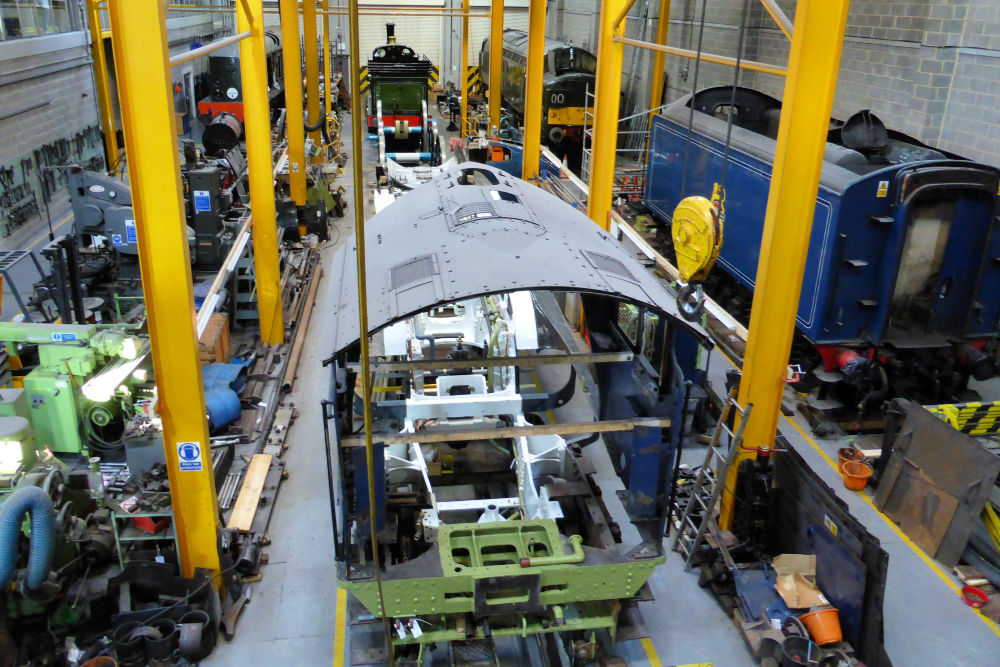
NORTH SHED
Take a peek behind the scenes at some of the work that goes on keeping the collection in tip-top condition with a visit to the North Shed. You’ll almost certainly see engines in various states of deconstruction as they are maintained and restored so they can survive long into the future.
An exhibition about the famous locomotive ‘The Flying Scotsmen’ can be found in the North Shed. It tells the history of this famous locomotive, it’s trials and tribulation which include it being stuck in the USA and its rescue and restoration to a working locomotive that still pulls trains on the national rail network.
From the North Shed, there is also access to a viewing balcony where you can witness trains running through nearby York station on the East Coast Mainline. Finally, you can wander through a collection of thousands of artefacts from the railways which you aren’t quite sure whether they are on display or you’ve accidentally wandered into a storeroom. Such is the quantity of items and the way they are crammed into the space.
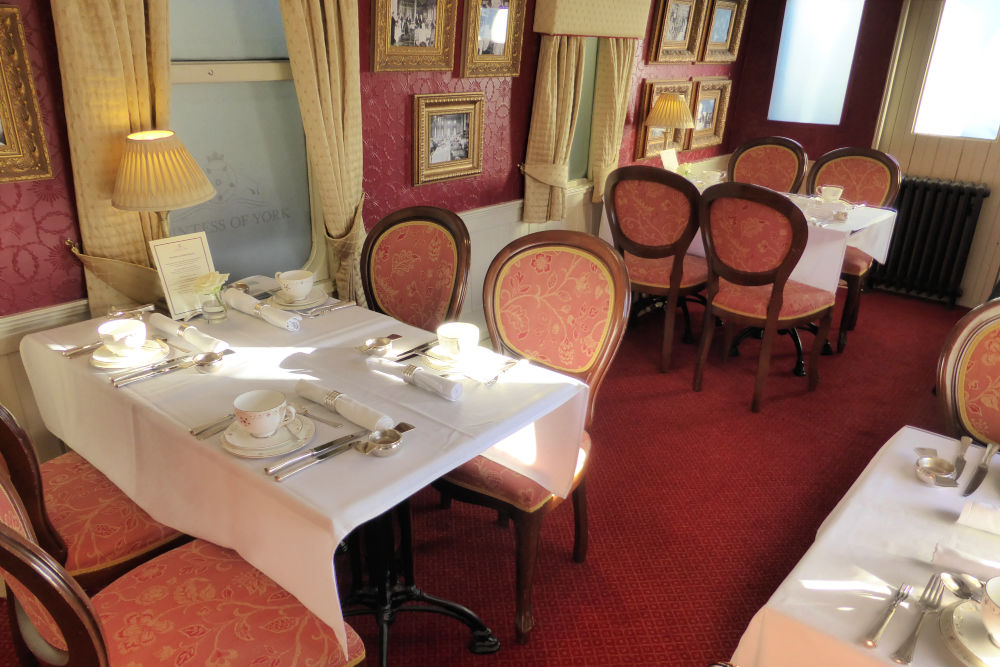
COUNTESS OF YORK
Between the Main Hall and the Station Hall, you’ll find the Countess of York a restored vintage railway carriage. This small oasis serves afternoon tea three times a day in the splendour of a carriage from the golden age of rail travel.
Indulge in soup, finger sandwiches, scones with clotted cream and jam and a selection of cakes and desserts. It’s the perfect spot to relax after a busy time seeing all the trains, or perhaps the perfect place to apologise to a significant other who is maybe not quite as interested in trains as you are!
The service in the Countess of York is exemplary with white-gloved serving staff, fine china, and loose leaf tea complete with silver strainers. The only thing missing is the gentle rocking of the carriage as it hurtles through the countryside and the clickety-clack of the wheels as it travels along the rails.
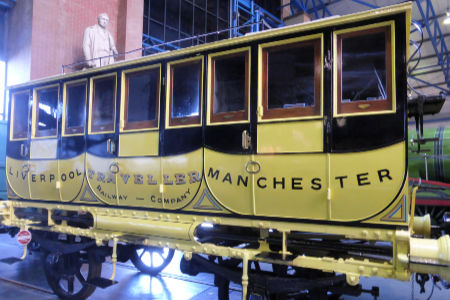
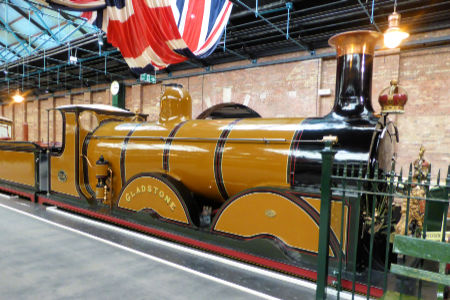
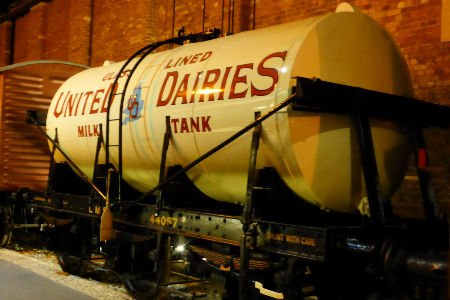
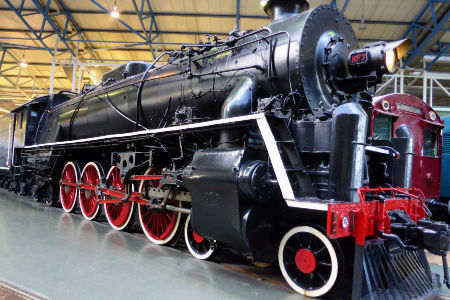
PLAN YOUR VISIT TO THE NATIONAL RAILWAY MUSEUM
Information last updated September 2019
HOW TO GET THERE
The National Railway Museum can be found at Leeman Road, York YO26 4XJ.
The nearest station is York (East Coast Mainline) and the station is just six-minutes walk.
Parking is available across the road from the entrance at a cost of £10 per vehicle. If you book to enjoy Afternoon Tea in the Countess of York, your parking charge will be refunded, just ask your host.
From the centre of York, the National Railway Museum is about a ten-minute walk.
There is also a road-train which departs from outside York Minster. The trip takes ten to fifteen minutes and costs £3 each way for adults and £2 each way for children.
HELPFUL LINK:
- If you need an app that will navigate you around whether walking, driving or using public transport and even works offline then click for a guide about how to use Here WeGo.
OPENING HOURS
Opening hours are 1000-1700 every day except for the 24th to 26th December. Opening hours are extended to 1800 in the summer.
As most of the attraction is indoors, any time of year is a good time to visit and it could be the perfect place to visit on a rainy or cold day. We would recommend you allow at least two to three hours to fully explore the museum.
HOW TO BUY TICKETS & SAVE MONEY ON ADMISSION
Admission to the museum is free.
Bookings for the Countess of York are £25.50 per person or £35.50 with champagne.
If you arrived by car, the parking charge is refunded for visitors who take afternoon tea on the Countess of York.
ACCESSIBILITY
All areas of the museum offer step-free access. Access to locomotive cabs and carriages is not step-free with the exception of the Shinkansen and the Chinese Locomotive.
For full accessibility details please visit the National Rail Museum Accessibility page.
IS THE NATIONAL RAIL MUSEUM WORTH THE VISIT?
If you are at all interested in railways, steam engines, royal trains and more, then the National Railway Museum is definitely worth the visit. There is so much to see including famous locomotives, historic trains and record-breaking engines. Being able to get so close to so many exhibits, explore underneath a steam engine or see the cab of the record-breaking Mallard is a joy for any rail enthusiast.
See what others think of this attraction on Trip Advisor.
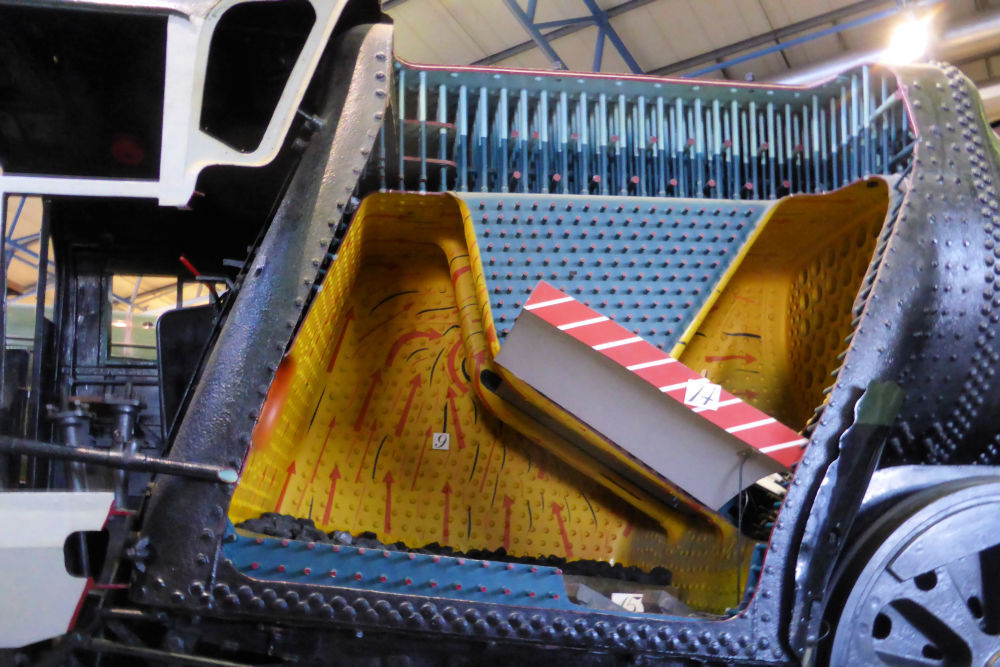
ADD TO YOUR YORK ITINERARY
With Roman roots and a Viking past, the walled city of York has much to inspire visitors and for those with a sweet tooth, it’s rich chocolate history will be sure to satisfy their cravings. Here are a few choice selections to whet your appetite.
- Take a tour of the centuries-old Gothic cathedral York Minster. Explore its undercroft, gaze at its beautiful stain glass windows and climb the tower for views across York.
- Join a ride through a reconstructed Viking village and see how York would have looked in the time of the Vikings at the Jorvik Viking Centre.
- York has a rich history with our favourite sweet treat, learn about the history of some of the most famous brands in chocolate at York’s Chocolate Story.
- Climb Clifford’s Tower for panoramic views across York and explore the history of all that is left of York Castle.
- Take some retail therapy in The Shambles, York’s most famous and one of Britain’s most picturesque streets.
RELATED ATTRACTIONS IN THE UK
As the birthplace of the railways, the UK has a rich variety of railway related attractions. Here are a few you might want to consider visiting:
- Visit the London Transport Museum to find out more about the history of transport over and underground in London.
- Let the train take the strain to the top of Wales’ highest peak on the Snowdon Mountain Railway. The narrow-gauge rack and pinion railway will take you up over 1,000 m (3300 ft) in just 4.7 miles (7.5 km).
- Ride Mail Rail, the post offices tiny underground railway that was built just to carry the post. Today you can ride it yourself and learn about how and why it was constructed.
- Take a ride on one of many steam railways around the country and see steam engines in action. You can find your nearest railway on the Heritage Railways website. One of our favourites is the Kent and East Sussex where you can take a steam train to Bodiam Castle!
- Modern railway lines can still be a great way to see the country. For example, the Far North Line from Inverness to Thurso and Wick is the most northerly line in the UK and even without the allure of steam, little detracts from the wild and beautiful countryside this railway travels through.
Want to save this for later? Click the Pinterest button on the left for a pinnable image!
RESOURCES | PLAN YOUR TRIP TO YORK
To book flights, rental cars, accommodations, and activities for your trip, please check out our recommended travel providers, favourite apps and websites.
These are a few tours that we would recommend for your trip to York.
Some of the links in the post above are affiliate links. This means if you click on the link and purchase the item, we will receive an affiliate commission but this does not affect the price to you. Please read our full disclosure policy here.
